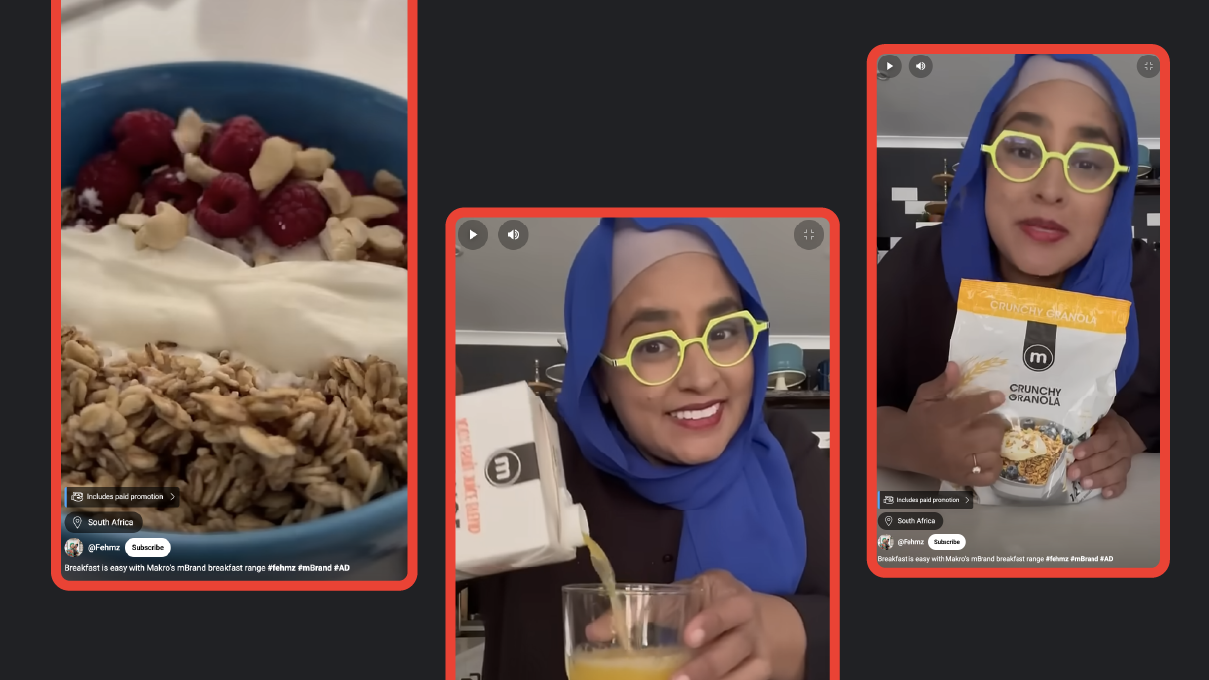Tom Chard is a lead media and campaign planning manager at Tesco, where he oversees the media strategy behind some of the retailer’s key food advertising activities. Here, he explains the thinking behind their “Food Love Stories” Ramadan/Eid campaign and the importance of effective media planning.
As Britain’s largest grocery retailer, we believe it’s our responsibility not just to serve but to represent the nation. We want Tesco to be a place that is welcoming for everyone — and to do that it is crucial that we are fully inclusive and reflective of all our customers, in store and in our advertising.
People want media that resonates with them, feels authentic, and is relevant. Yet Google’s Mirrors & Windows research last year on identity and media choices in modern Britain revealed only 40% of Brits feel represented by the current media.
Our own findings echo this, with 67% of British Muslims feeling misrepresented in U.K. media, and 60% of the U.K. population acknowledging a limited understanding of Ramadan.
To bridge this gap, we launched the “Food Love Stories” Ramadan/Eid campaign, aimed at celebrating and representing the Muslim community during this pivotal time. We also set out to ‘educate the nation’ about Ramadan — the most important month on the Islamic calendar. To achieve these goals, we turned to YouTube for its broad reach and relevance.
Media planning led by collaboration and nuance
While creative representation is critical to a successful marketing campaign, it’s only one part of the picture. Planning is just as important.
It was imperative for us to gain a greater understanding of Ramadan, learn from different lived experiences of Muslim communities, and decipher the most helpful ways to show up with our ads during this key moment.
That’s why we collaborated with media agency EssenceMediacom. Working with its business director, Laura McGurran, we spoke to and partnered with various diversity, equity, and inclusion (DEI) networks — from publications to media outlets and cultural consultancies. Building these relationships was fundamental to making our media planning more inclusive and informing our strategic thinking for the campaign.
The Unmistakables, an insights driven DEI consultancy, and Amaliah, a media company dedicated to amplifying the voices of Muslim women, were also invaluable. They helped us ensure we were being true to the Muslim community with our messaging, timing, and creative approach. For example, Amaliah helped us explore the multiple sub-communities among the Muslim audiences — down to the recipes we were planning to create for the campaign.
Together with EssenceMediacom, we developed a detailed time-of-day strategy to adjust media spending for those fasting during Ramadan. Muslims taking part in Ramadan do not eat or drink anything during daylight hours, eating one meal (the “suhoor”' or “sehri”) just before dawn and another (the “iftar”) after sunset. That’s why we reduced spending during fasting hours and increased it after people had likely broken their fast and finished family time.
We also considered whether people might want to see food-related content when using their phones during fasting periods. We aimed to remain sensitive to the fasting community’s needs, especially if they hadn’t eaten since 5am.
Tapping communities on YouTube
Our “Food Love Stories” series is the perfect vehicle for the Ramadan/Eid campaign because it highlights the great diversity of our customers while celebrating a key cultural moment. Using YouTube Select, a programme that allows advertisers to reach audiences based on most relevant content, we were able to:
- Create a mirror for the Muslim community: We explored curated lineups and contextual advertising. This helped us engage Muslim viewers, showing them relevant content that reflected their lives during the Ramadan celebration. We could do this by serving ads via curated content categories and across brand-selected channels.
- Provide a window for the rest of the nation: Using various YouTube formats, we could reach people at scale. Content was served via bumper ads and skippable and non-skippable in-stream ads. The aim of optimising our campaigns for maximum reach was to help educate viewers beyond the Muslim community and give them a glimpse into Ramadan celebrations.
By the end of the campaign, we had driven 13M impressions and reached 8.6M people across the U.K., boosting our ad recall by +3.15%. In addition, we saw a 30% uplift in our own brand tracker’s response to whether the Muslim community feels Tesco is inclusive.
These results proved the power of partnering with DEI networks to create meaningful, impactful work — and the importance of effective media planning. We reached millions of people by mirroring the lives of many Muslims during a key cultural moment and providing a window to help 'educate the nation' for people less familiar. This outcome truly underscored Tesco's goal to represent and serve the nation.
5 learnings for more inclusive media planning
- Don’t feel intimidated doing campaigns for celebrations you’re less familiar with. It’s an opportunity to learn more about modern Britain — and it’s better to show up than do nothing.
- Ask questions to the communities you’re trying to speak to or feature in your campaigns — they appreciate you taking the time to talk to them and having their voices heard.
- Partner with DEI networks, cultural consultancies, customer focus groups, and employee resource groups (ERGs) in your organisation. These can help you better understand the lived experiences you’re trying to tell and reflect in your ads.
- Make your creative and media planning work even harder together. While having the right creative representation is important, delivering the right messages to the right people at the right moment is equally critical.
- Stay up to date with the latest YouTube advertising innovations. Using the features YouTube Select had to offer, we could be more strategic, timely, and effective with our messaging and reach people at scale.





